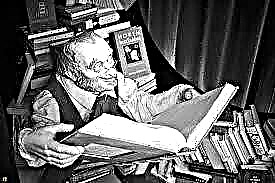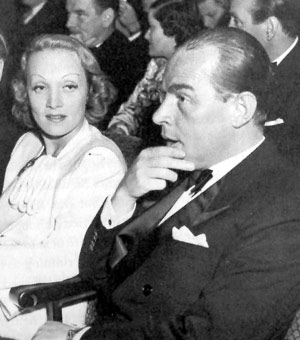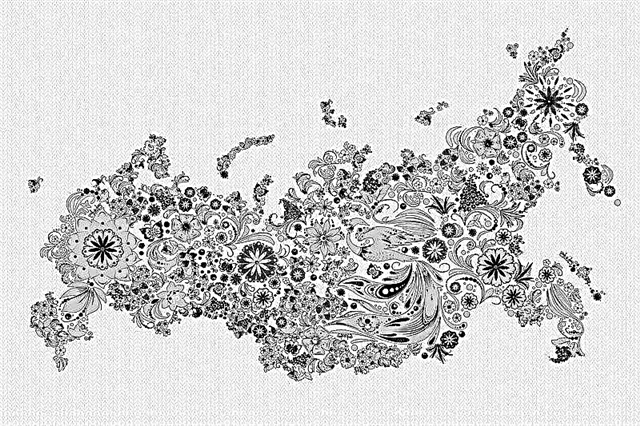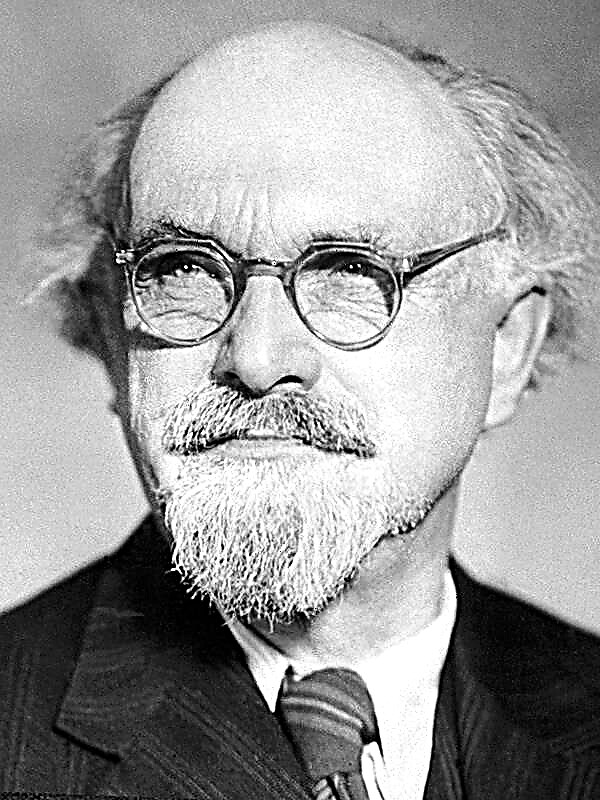The tragic story of the artist Chartkov began in front of a shop on Schukin’s courtyard, where he saw one among the many paintings depicting peasants or landscapes, and, having given the last two-handed man for it, he brought him home. This is a portrait of an old man in Asian clothes, it seemed unfinished, but seized with such a strong brush that the eyes in the portrait looked as if they were alive. At home, Chartkov finds out that the owner came with a quarter, demanding payment for an apartment. The chagrin of Chartkov, who already regretted the two-manded and sitting, out of poverty, without a candle, is multiplying. He thinks, not without bile, of the fate of a young talented artist, forced into a modest apprenticeship, while visiting artists “make noise with their usual habits” and take away a fair amount of capital. At this time, his gaze falls on the portrait, already forgotten by him - and completely alive, even destroying the harmony of the portrait itself scare him, giving him some unpleasant feeling. Going to sleep behind the screens, he sees through the cracks a month-lit portrait, also staring at him. In fear, Chartkov curtains him with a sheet, but sometimes he sees eyes shining through the canvas, then it seems that the sheet is torn off, finally he sees that the sheets really are gone, and the old man moved and got out of the frames. The old man comes to him behind the screens, sits down at his feet and begins to count the money, which he takes out of the bag he brought with him. One package with the inscription "1000 pieces of gold" rolls to the side, and Chartkov grabs it unnoticed. Desperately squeezing money, he wakes up; the hand feels the heaviness just in it. After a series of successive nightmares, he wakes up late and hard. Having come in with the landlord, having found out that there is no money, he offers to pay with his work. The portrait of the old man attracts his attention, and, looking at the canvas, he inadvertently squeezes the frames - the package known to Chartkov falls with the inscription “1000 pieces of gold”.
On the same day, Chartkov pays the landlord and, consoling with stories about the treasures, drowning out the first movement to buy paints and lock himself up for three years in the workshop, rents a luxurious apartment on Nevsky, puts on his dandy, advertises in a walking newspaper, and the next day he takes the customer. An important lady, having described the desired details of the future portrait of her daughter, takes her away when Chartkov seemed to only sign and was ready to grab something important in her face. The next time, she remains dissatisfied with the similarities that have appeared, the yellowness of her face and the shadows under her eyes, and, finally, she takes for the portrait the old work of Chartkov, Psyche, slightly updated by the annoyed artist.
In a short time, Chartkov comes into fashion: grasping one common expression, he paints many portraits, satisfying a variety of claims. He is rich, adopted in aristocratic houses, and he expresses himself harshly and arrogantly about artists. Many who knew Chartkov before are amazed at how talent that was so noticeable at first could disappear in him. It is important, reproaches youth with immorality, becomes a miser, and once, at the invitation of the Academy of Arts, when he comes to see the canvas of one of his former comrades sent from Italy, he sees perfection and understands the whole abyss of his fall. He locks himself in the workshop and immerses himself in work, but is forced to stop every minute because of ignorance of the elementary truths, the study of which he neglected at the beginning of his career. Soon he was seized by terrible envy, he began to buy the best works of art, and only after his imminent death from a fever, connected with consumption, it becomes clear that the masterpieces for the acquisition of which he used all his great fortune, he was brutally destroyed. His death is terrible: the terrible eyes of the old man seemed to him everywhere.
The story of Chartkov had some explanation after a short time at one of the auctions in St. Petersburg.Among the Chinese vases, furniture and paintings, the attention of many is attracted by the amazing portrait of a certain Asian whose eyes are painted with such art that they seem alive. The price increases fourfold, and then artist B. speaks, declaring his special rights to this canvas. In support of these words, he tells a story that happened to his father.
Having outlined for the beginning the part of the city called Kolomna, he describes the moneylender who once lived there, a giant of Asian appearance, who is able to loan anyone who wants it, from an old woman’s niche to wasteful nobles. Its interest seemed small and the payment terms were very profitable, however, with strange arithmetic calculations, the amount to be returned increased incredibly. The worst thing was the fate of those who received money from the hands of a sinister Asian. The story of a young brilliant nobleman, a disastrous change in the character of which brought the empress's wrath on him, ended with his madness and death. The life of a wonderful beauty, for the sake of the wedding with which her chosen one made a loan from a moneylender (for the bride's parents saw an obstacle to marriage in the upset situation of the groom), a life poisoned in one year by the poison of jealousy, intolerance and whims, which suddenly appeared in the husband's previously noble character. Even encroaching on his wife’s life, the unfortunate committed suicide. Many not so conspicuous stories, since they happened in the lower classes, were also associated with the name of the usurer.
The narrator’s father, a self-taught artist, about to portray the spirit of darkness, often thought about his terrible neighbor, and once he himself comes to him and demands to paint a portrait from himself in order to stay in the picture “just like alive”. Father happily takes up the matter, but the better he manages to grasp the old man’s appearance, the livelier his eyes go out on the canvas, the more painful a feeling takes him. Without the strength to bear the growing aversion to work, he refuses to continue, and the old man’s prayers, explaining that after his death his life will be preserved in the portrait by supernatural power, frighten him completely. He runs away, the unfinished portrait is brought to him by the old man’s servant, and the usurer dies the next day. Over time, the artist notices changes in himself: feeling jealousy for his student, he harms him, the moneylender's eyes appear in his paintings. When he is about to burn a terrible portrait, a friend begs him. But even he was soon forced to sell his nephew; the nephew also got rid of him. The artist understands that part of the usurer’s soul moved into a terrible portrait, and the death of his wife, daughter and young son finally assure him of that. He places the senior at the Academy of Arts and goes to the monastery, where he leads a strict life, seeking all possible degrees of selflessness. Finally, he takes up the brush and writes the Christmas of Jesus for a whole year. His work is a miracle full of holiness. But to his son, who came to say goodbye before traveling to Italy, he tells many of his thoughts about art and, among some of the instructions, telling the story with the moneylender, conjures him to find a portrait walking around and exterminate it. And now, after fifteen years of futile searches, the narrator finally found this portrait - and when he, and with it the crowd of listeners, turns to the wall, the portrait is no longer on it. Someone says: "Stolen." Maybe you are right.












